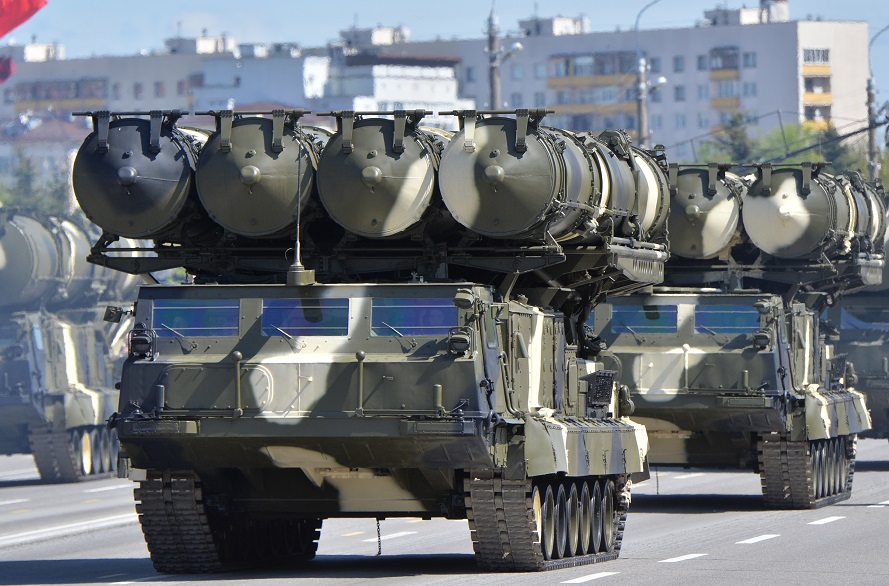Russia will set up an after-sales service center for the maintenance of air defense systems in Iran.
"We are creating a special service center in Iran, to which we have supplied our air defense systems," Russia’s Presidential Aide for defense industry cooperation Vladimir Kozhin said on March 12, in an interview with Rossiya-24 TV.
According to Kozhin, Russia will develop a global network of its service centers that will focus on the maintenance of Russian military equipment. Kozhin also added that such a large service center dealing with helicopter technology, armored vehicles and air defense complexes was launched in Venezuela in 2017, and added that Turkey asks the establishment of such special service center.
In 2007, Russia signed an $800 million deal with Iran to supply it with multiple units of the S-300 surface-to-air missile defense system, but the contract’s fulfillment was suspended in 2010 due to UN sanctions that barred hi-tech weapons sales to Tehran.
In 2015, Russia lifted the ban on the delivery of the S-300, after Iran reached an agreement with the five permanent members of the UN Security Council and Germany to curb its nuclear program, in exchange for the gradual lifting of nuclear-related sanctions.
The S-300 is an antiaircraft surface-to-air missile system capable of destroying radar surveillance and guidance aircraft, planes using stealth technology, reconnaissance and strike complexes, medium-range ballistic missiles, as well as tactical and cruise missiles. The system can detect 20 targets simultaneously and directly engage with 12 separate hostile flying objects, including missiles, fighter jets and helicopters.
In October 2016, Russia’s Federal Service for Military and Technical Cooperation said that it had delivered the S-300 systems to Iran, and in July 2017, the Iranian Air Force confirmed that the S-300s had assumed combat duty.
Russia and Iran have been cooperating to support President Bashar al-Assad’s government in Syria for the past seven years. Russian fighter jets have used Iranian airspace for military operations against terrorists in Syria, and have conducted military operations from Iran’s Noje Airbase in Hamadan province for the first time in August 2016, which drew criticism from the U.S. and even some Iranian lawmakers.
“The basis of cooperation between Iran and Russia is common threats and interests of the two countries” Iran’s Ambassador to Moscow Mehdi Sanai said in a meeting with Russian parliamentarians, RIA Novosti reported on Tuesday.
According to Sanai, one of the threats is narcotics whose production has increased by 40 times, in the past 15 years, after what he called NATO’s “invasion” of Afghanistan.
"Another biggest threat is terrorism, which in fact, represents a global threat, but Iran and Russia are very honestly fighting against this phenomenon, and achieved certain victories in combating it,” Sanai added.







 President Ilham Aliyev shed light on the evolving contours of the peace process with Armenia during an international conference in Baku this week. ...
President Ilham Aliyev shed light on the evolving contours of the peace process with Armenia during an international conference in Baku this week. ...
 Azerbaijan and Armenia started the process of demarcation of their border on Tuesday, with the installation of the first border markers based on ge...
Azerbaijan and Armenia started the process of demarcation of their border on Tuesday, with the installation of the first border markers based on ge...
 Armenian sappers commenced on Monday mine-clearance operations in the territories adjacent to the Saint Mary Church in village of Voskepar (Armenia...
Armenian sappers commenced on Monday mine-clearance operations in the territories adjacent to the Saint Mary Church in village of Voskepar (Armenia...
 Iran and Pakistan have signed eight cooperation documents in various fields, and agreed to strengthen ties to fight terrorism in the region.
Iran and Pakistan have signed eight cooperation documents in various fields, and agreed to strengthen ties to fight terrorism in the region.



